| ALL ABOUT ARTIST AND INK JET CANVAS
|
 |
| Canvas as an artistic substrate has been around for centuries. When commissions and travel became more common, artists began seeking a material that was easier to transport than the stone and wood that was most commonly used at the time. Around 1500, canvas material originally intended for the manufacture of boat sails and tents - made primarily from hemp - fell into the hands of artists, and the rest is history.
Today, there are many different canvases available, both for painting and for digital printing. Though a digital print of a painting on canvas will look very much like its original, different treatments and materials must be used for a canvas that will pass through the mechanisms of a printer. What follows is a detailed foray into the world of canvas.
Scan the simplified table summary below, or read on for a detailed exploration of the types and qualities of canvas.
|
SUMMARY |
ARTIST CANVAS |
INK JET CANVAS |
| USAGE |
- Paintings, since 16th century
|
- Ink Jet Printing, over 15 years
|
| MATERIALS |
- Cotton
- Linen
- Jute
- Synthetic fiber
|
- 100% Cotton
- 100% Polyester
- Mix Polyester-Cotton blend
|
| WEIGHTS AND THICKNESS |
- Single fill Ducks:
7 oz - 15 oz
- Double fill Ducks:
#12(11.5oz) to #1(30oz)
|
- most commonly 300 - 440g
- 19-22 mils thickness
- Fabric Weave: mostly Oxford 2 over 1
|
PRIMERS AND
COATINGS |
- Oil primer for oil painting
- Acrylic primer for oil or acrylic painting
- Gesso for more texture, oil or acrylic painting
|
- Ink Jet receptive coating
- Matte, satin, glossy finish
- Optical brightening agents (OBAs)
- Color quality, stability, ink receptors
|
| FINISHES |
|
- Laminated, sprayed or painted on for protection from UV (fading and yellowing), dust and dirt, scratches and rips
- Available in matte, satin and gloss
|
| SIZE |
- Up to 144" wide, unlimited length
|
- Up to 60" wide, 60' length for Pigment ink printers
- Up to 120" wide, 60' length for Solvent ink printers
|
| PRICE |
- Cotton, raw: $1 / sqft
- Cotton, primmed:
- Linen, raw
- Linen, primmed
|
- 100% Cotton: $1 / sqft
- 100% Polyester: $1.6 / sqft
- Mix: $1.2 / sqft
|
INK JET CANVAS FOR DIGITAL PRINTS
Within the category of Ink Jet canvas reside other denominations. There are many commercial and private uses for canvas prints, limited only by the consumer's imagination. Some of the most common providers of canvas prints are print shops, photo labs and photography studios, fine art reproductions, and sign companies.
The customers who seek out canvas prints include those wanting to begin a personal collection of high quality fine art prints or explore a new option for wedding, newborn or family picture display, art galleries offering a lower cost alternative to purchasing originals, businesses seeking signage for advertising or their store front, or artists who have decided to offer limited edition or open edition prints of their work.
PRINTED CANVAS INKS
The inks used for fine art (giclée) printing are called aqueous (water-based) inks. However, there are other types of inks that are used for other printing purposes. Sign printing companies often use solvent inks, which are longer lasting in outdoor conditions, unlike a fine art print that is intended for indoor use. Though originally solvent inks were so caustic they soaked into any surface, today the inks require a special treatment on the canvas prior to printing to ensure adhesion. Solvent inks soak deeper into the canvas, permeating the layers of fabric like a tattoo. This allows the ink to withstand the harsher outdoor environment.
Though solvent-printed canvases are very durable, and don't require lamination or coating after printing. Printers using solvent ink tend to print more quickly and therefore are more efficient than aqueous Ink Jet printers. The lack of post-printing coating also saves time in production. Solvent inks also tend to be cheaper than aqueous inks.
Solvent ink-printed canvases are generally lower quality than those printed with aqueous inks. This is usually not a problem, since outdoor signage tends to be large, without small details, in order to be easily seen and recognized from a difference. Despite its durability against the elements, solvent inks do begin to fade over time, due to their constant exposure to moisture and sunlight. This is offset, however, by their lower cost, therefore making them more feasible to replace.
MATERIALS AND WEIGHTS
There are three fabrics most often used for Ink Jet canvas. Each one offers different qualities, and the best selection will depend on the project for which the final print will be used.
- Polyester-Cotton Blend: Since Artist canvases are often made of cotton, this type of canvas combines the sought-after texture of a cotton weave with a color consistency more suited to mass production, provided by the polyester. Generally approximately a 60/40 poly-cotton mix, this combination ensures that from print to print, and roll to roll, the canvas and image are as uniform as possible.
- Polyester: Less expensive than those containing cotton, polyester canvas is often used for large-scale products. It has a smoother surface, which can appeal to photographers who want to ensure all the details of their photographic prints are highly visible in the reproduction. However, for artists who want their copy to look just like the original, 100% polyester is a less popular choice.
- Cotton: 100% cotton canvas is most like traditional artist canvas. It has a deeper texture, but due to the use of natural fibers, it is impossible to ensure the color will remain the same throughout the canvas roll. As a result, cotton canvas is less than ideal for anyone producing multiple prints of the same image, or a series that will be displayed together.
In addition to the materials used in construction, the tightness of the weave can make a considerable difference in the final appearance of a canvas. A tightly woven canvas is called "duck" canvas, while a looser weave is referred to as "plain". In addition, whether threads are laid in single thickness or doubled over before being woven on the loom will change the texture as well. But regardless of the texture of the raw canvas, the coatings applied to make it possible to print on will inevitably lessen that texture. More on that later.
Canvas weight is generally measured in ounces per square yard. Thread thickness, thread count and the tightness of the weave all contribute to the weight of the finished canvas. In general, Ink Jet canvas is heavier than artist's canvas, and usually weighs between 16 and 20 oz. While the heavier the canvas, the more durable it is throughout the stretching process, these options are often more expensive as well. Much like the canvas material, the customer can base their choice on either price or appearance.
Note: Sometimes, the weight may be indicated by a number. The number decreases as the canvas thickness increases. #12 translates to 11.5 oz, #10 to 15 oz and #8 to 18 oz (approximately). Unfortunately, the numbered weight is not uniform from company to company.
|
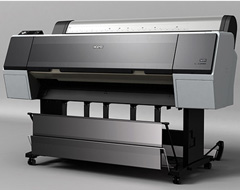
An Epson Ink Jet printer.
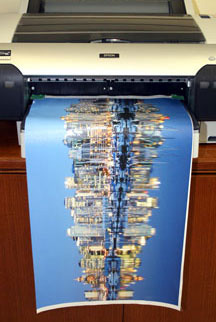
A newly printed, Giclée canvas.
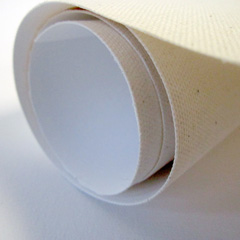
Ink Jet canvas, with the uncoated back visible.
|
AVAILABLE SIZES OF INK JET CANVAS
Canvas printing for aqueous ink printers generally have a more limited canvas width. Canvas rolls are a maximum of 64" (5 feet) wide. This means a rolled canvas print cannot be more than 64" wide, and if the canvas will be stretched, the image cannot exceed 60" in width, to allow for the excess required to wrap around the stretcher bar frame. Despite this limited width, most canvas rolls are as many as 60 feet long, so the length of the print is limited only by the size restraints of the display space.
Since solvent ink printers are often expected to produce extremely large outdoor signage, their canvases have a larger maximum width available - up to 120 inches.
|

img description
|
PRE-PRINTING INK JET CANVAS COATINGS
There are a variety of coatings - also called finishes, not to be confused with the finish added after the image has been printed - and treatments that can be applied to the canvas in preparation for the printing process. Each one has a different effect, either visually or in contribution to the longevity of the finished piece.
- Matte: A matte coating results in a more muted white tint due to the lack of light reflecting of of it. It will reduce the amount of glare on the final image, and is a common choice for fine art reproductions or pieces that will be hung where reflected light could lessen the impact. The downside of a matte coating is that it can dull the colors of the artwork. This is because light is scattered rather than reflected off the surface. As a result, a matte coating may not be ideal for a brightly colored image. However, adding a gloss finish on top of a matte canvas can counteract this dullness.
- Satin/Lustre: This coating provides a brighter finish to bold artworks, but still minimizes the glare from light reflecting off the surface. It creates an appearance somewhere between a matte and gloss coating.
- Gloss: Gloss coatings are most common for canvases used in solvent printers, rather than Ink Jet. When a glossy print is stretched (as many printed on Ink Jet printers are), it runs the risk of cracking when the fibers expand. This can be prevented by adding a finish, but there are certain canvas manufacturers who sell gloss canvas guaranteed not to crack even when unfinished.
In addition to these coatings, manufacturers may add other treatments to the canvas. These can include OBAs (optical brightening agents), which make the canvas a brighter white, minimizing the natural cream or beige of the fabric. Other additives may boost color quality, improve the stability for an archival-grade rating, make the canvas more receptive to the ink.
|

img description
|
POST-PRINTING INK JET CANVAS FINISHES
There are other coatings available in addition to the gloss and satin finishes discussed above, that can be applied once the canvas has been printed. These include canvas varnishes, which protect and lengthen the life of the canvas, as well as enhance the colors of the printed image.
This enhancement of the image is created by increasing the density of the colors, making blacks blacker and blues brighter, for instance. The varnish protects the canvas by providing additional UV protection (the inks themselves will already have some), water-proofing the surface, and inhibiting scratches, cracks, and chips.
Post-printing coatings may be applied either by spraying or painting the substance onto the canvas, though there are machines that do it automatically, as well. Print shops require a special room or blocked off section of the workshop in which to apply the coating. There cannot be any dust particles floating around, and the area must be ventilated. It is important to make sure the ink is completely dry before the coating is applied, and that the coating has completely dried before the canvas is stretched.
If the ink, canvas and coatings on a Giclée canvas print are all acid free, the print is likely to be of archival quality. This means that the colors should remain similar to how they first appear, and the canvas should resist yellowing and other decay, for as many as 100 years. This of course assumes that the canvas is properly displayed in an area without direct light or extreme humidity fluctuations
|
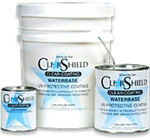
The finish will protect the canvas from light and acid damage.
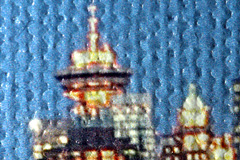
Canvas prints have a visible texture.
|
| Once a digital canvas print is produced and appropriately coated, it can be mounted onto a stretcher bar frame. Called a gallery wrap, this involves stapling the canvas to the back of the frame, and pulling it tightly around all four edges so the image or a printed, solid color border adorns the drop edge of the frame and the corners are smoothly folded in. The result is a piece of art that can be hung on the wall as is, or framed in a standard frame or floater frame.
Alternately, the coated canvas can be rolled and shipped to the customer so they may mount it or display it in their own way.
|
ARTIST CANVAS FOR PAINTING
Since the hemp sails of the 16th century, artist canvas has gone a long way, to become a material specialized to provide the painter with the ideal surface on which to lay her masterpiece. Artist canvas is used for everything from oil paints and acrylics to mixed media artworks utilizing collage, paint and textiles. Artists create one-of-a-kind pieces for exhibits and commissions, artists and non-artists alike craft unique wall art, and businesses purchase artwork for the meeting room. Original paintings on canvas remain a highly desirable type of decor that indicates status and taste.
MEDIUMS USED ON ARTIST CANVAS
There are two types of paint that are generally used on an artist canvas. The artist's level of experience, working environment and the desired final result will determine whether oil paint or acrylic paint is used.
- Acrylic Paints: Acrylics are a good choice for beginner artists, but acrylic on canvas has also become a common sight in art galleries in past years. The first acrylic paints were marketed to the public in the 1950s, which gives them a much shorter history than oil paints. Acrylics are water-based and are therefore much easier to clean up. They dry much faster than oil paints, which means the art is ready to display more quickly, but also that blending and mixing on the canvas is more difficult and must be done immediately. Acrylics are quite elastic, and this elasticity allows them to hold up well over time, without cracking on the canvas surface. Certain acrylic paints can be applied to a wide range of substrates, including canvas, wood, paper, even fabric, and are useful for mixed media; they can be combined with sand or rice, to create a texture. Finally, good quality acrylics can generally be found for relatively little cost.
- Oil Paints: Oil paint is perhaps the most common painting medium, and was used in the majority of classic paintings that we know today, such as the works of Monet, Van Gogh, and Rembrandt. In fact, the oldest known oil paintings date to the 7th century. Today, most oil paints are mixed with linseed (flax) oil. Because oil takes longer to evaporate than water, oil paintings take a long time to dry, generally up to 24 hours. This means they can easily be blended on the canvas, creating blurred brushstrokes and unique depths. However, this can be a deterrent for some artists, who prefer the bold color distinctions common in acrylic painting. Perhaps the largest deterrent of oil paints is the toxic chemicals that must be used to clean up. Some of the pigments (powdered color) used is toxic as well. Recently, fast-drying oil paints have been produced, as well as water-soluble options that allow for easier clean up.
- Other types of paint: While oil and acrylic paints are the traditional and most widely used canvas mediums, other paints do exist.
- Egg tempera is a fast drying paint made by mixing powdered pigments with a water-soluble binder - usually egg. Most often used on wood from the 13th to 16th centuries, it can be applied to canvas but will crack and peel if too thick. Today, it is generally offered as a children's paint, because it is toxic-free.
- Watercolor paints are most often applied to paper because a highly absorbent surface is required for the paint to adhere. They can be used on artist canvas, using a special type of finish that makes the canvas more absorbent. A type of watercolor canvas has also been recently created.
|

img description
|
MATERIALS AND WEIGHTS OF ARTIST CANVAS
Much like Ink Jet canvas, artist canvas comes in a variety of materials, thicknesses, weaves and weights. The type of canvas depends on the medium used, the artist's painting style, and the desired final appearance.
Canvas Materials
There are two materials most commonly used to create artist canvas: linen and cotton. Linen was traditionally used (once they progressed from hemp) because of its desirable texture and ability to hold its shape even after being stretched. However, the price of linen rose considerably in the late 1800s, and artists began to turn to cotton. One immediate appeal of cotton was the color. Linen is a tan grey color and must be bleached, which weakens the fibers, or painted white. Cotton is naturally a warm white, so bleaching or a primer were not necessary. However, cotton will not retain its original shape when stretched, and is not as resistant to bacterial growth as linen. In addition, the soft white color will darken over time if not treated prior to painting.
Canvas made from jute or synthetic fibers is also available. Such canvas does not last as long as cotton or linen canvas, and is usually inexpensive. Jute as a very loose weave, which may fulfill some artists desire for extensive texture. Synthetics can be made to look like any other type of canvas, but often have a most plastic feel.
Numbered Ducks (#) vs. Single Fill Ducks(oz)
Numbered and Single Fill duck refers to the type of weave from which a sheet of canvas is constructed.
Every piece of woven material is made from alternately overlapping the warp (lengthwise) yarn or thread and the weft (width-wise).
-
Numbered Duck refers to canvas woven using two threads in the weft. This is also referred to as "double-filled" or "plied yarn" canvas. Numbered duck canvas is generally stronger and more tightly woven than Single-Fill, and is identified by a "#" (hash) in front of a number that designates its weight.
#1 through #12 identify weights ranging from very heavy to very lightweight, respectively. Unfortunately, there is no universal standard, and these weights often vary between manufacturer.
Single-Fill Duck is any canvas woven using only one thread in the weft. As a result, single-fill canvas is generally lighter and less hardy. As opposed to the # system of Numbered Duck canvas, single-fill canvas is identified by ounce per square yard or oz (a 36" x 36" piece).
-
Numbered Duck Fabrics are Double Filled or "Plied Yarn" which creates a tighter weave construction smoother texture than single fill cotton ducks, making them stiffer & more durable fabrics. The tight dense weave make Numbered duck fabrics a suitable outdoor canvas for many applications. Cotton Duck fabric has been used for centuries and is perfect for historical reproductions.
#12 (11.5oz) Duck
#10 (15oz) Duck
#8 (18oz) Duck
#6 (21oz) Duck
#4 (24oz) Duck
#1 (30oz) Duck
Canvas Weights and Weaves
Artist canvas is most widely in square foot weights of 7 oz to 15 oz. The weight not only identifies the thickness of the canvas, but also how tightly woven the strands are. The tighter the canvas, the less absorbent it will be, and the finer and smoother the texture.
The weight of the canvas is generally dependent on the required longevity and the painting style of the artist. For instance, if the artist used great daubs of paint piled on the canvas, or layers one over the other repeatedly, then a thin, 7 oz canvas is not ideal. 10 oz canvas is quite common, and is useful for smaller pieces. 12-15 oz canvas is strong and ideal for heavy paint application or larger pieces.
Another quality that must be considered is the weave. It is indicated by a ratio of 1:1, 2:1, or 2:2. This means the canvas is woven by crossing one horizontal strand over one vertical strand (over and over), two horizontal strands of one vertical strand (or vice verse), or two horizontal strands over two vertical strands, respectively. While 2:2 is of course thicker than 1:1, 2:1 may be more problematic, because the uneven thread count means the canvas will stretch more one way than the other. 1:1 and 2:2 weaves are also called "square weaves".
The tightness of the weave will be the most visible quality. The wider the gap between the overlapping threads, the looser the weave. A looser weave means the raw canvas will be more absorbent, and most likely will require a finish or primer prior to painting.
|

A close up view of cotton canvas texture.

A close up view of linen canvas texture.
|
COATINGS AND FINISHINGS FOR ARTIST CANVAS
Pre-Painting Primers
Unlike Ink Jet canvas, which must be treated with a primer or coating prior to being placed in the printer, artist canvas may or may not be coated. Some artists prefer to paint on raw ("unprimed") canvas, experimenting with the higher absorbency of the surface and the natural color of the fibers. Alternately, they may choose to purchase unprimed canvas in order to prime it themselves. Most manufacturers and sellers of artist canvas provide simgle-primed, double-primed and unprimed options to their customers. Some may even offer triple-primed canvas.
There are both oil and acrylic primers. Store-bought primed canvas is often treated with an acrylic primer, which allows it to be used with both acrylic and oil paints. Oil primers, on the other hand, only work under oil paints. Oil primers are longer lasting and can be used on wood as well as canvas. Much like oil and acrylic paint, oil primers take longer to dry than acrylic primers.
The more coats of primer a canvas has, the smoother the texture will be. This is because, much like paint, the primer will fill the gaps and divots in the weave, evening out the surface.
Another common type of primer is gesso, a paste-like mixture that is made by mixing calcium carbonate (chalk) with a binder such as rabbit skin glue. Generally, gesso results in a thicker layer than oil or acrylic primer, which allows the artist to create a uniquely textured surface. Alternately, the gesso can be sanded down after application to create a smooth finish. Due to its absorbency, most gesso can be used as a base for any type of painting, from oil and acrylic to tempera.
Post-Painting Varnishes
Once the painting is completed, many artists choose to apply a varnish to the work. The varnish will protect the painting from yellowing or fading due to UV light and from gathering dust particles. Matte, satin, and glossy finishes are available, and each will give a different final appearance to the artwork. A glossy finish will add a sheen to the artwork that brightens the colors, but will also create a glare from reflected light. A matte finish will eliminate this glare, but make the colors seem duller. A satin finish will create a result somewhere in the middle.
Both oil and acrylic paintings can (and some say should) be varnished, but it is vital the artwork be completely dry before the varnish is applied.
|
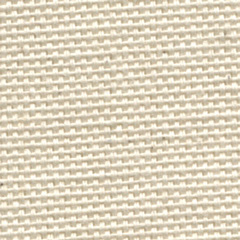
The texture and color of unprimed canvas.
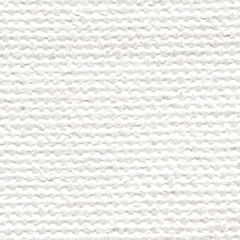
The texture and color of primed canvas.
|
AVAILABLE SIZES OF ARTIST CANVAS
Artist canvas can be purchased as a roll - to be stretched or mounted at the artist's discretion - or already mounted on a stretcher bar frame. Unlike the 60" width limit of Ink Jet canvas, artist canvas is available in widths of up to 144 inches (12 feet). The length of the roll can be up to 300 feet, so it is simple to get just the size the artist wants.
The standard sizes of stretched canvas include 5x7", 8x10", 16x20" and 22x28". If the canvas is ordered from a framing or art supply shop, however, it can be cut and mounted to the exact custom size the artist desires.
Different depths of stretcher bars are also available. The most common are 3/4" and 1 1/2", though 7/16", 2" and 3" are also available. This measurement translates to the distance the front of the canvas will be from the wall.
We offer custom-made extra large stretcher frames and canvas stretching services using double-primed or unprimed canvas and heavy duty bars with depths from 3/4" to 3". This is an excellent alternative when you need more control over your canvas requirements, but your art studio space or time is limited.
Order Online
|
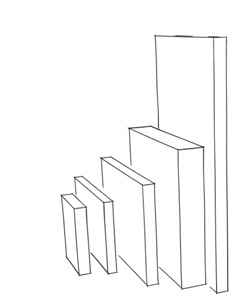
Artist canvas is available in a variety of sizes.

Stretcher bar frames come in various depths
|
| Since its creation many centuries ago, canvas has undergone countless redesigns and changes in purpose. Today, canvas is seen as a sturdy, reliable material ideal for both practical and artistic uses. Whether you are a decorator seeking a piece for your living room or an artist planning a new design, an image on Ink Jet or artist canvas will satisfy all your artistic requirements.
|
|
© 2002-2025 - KeenART Media Ltd.
|
|
| |
|

